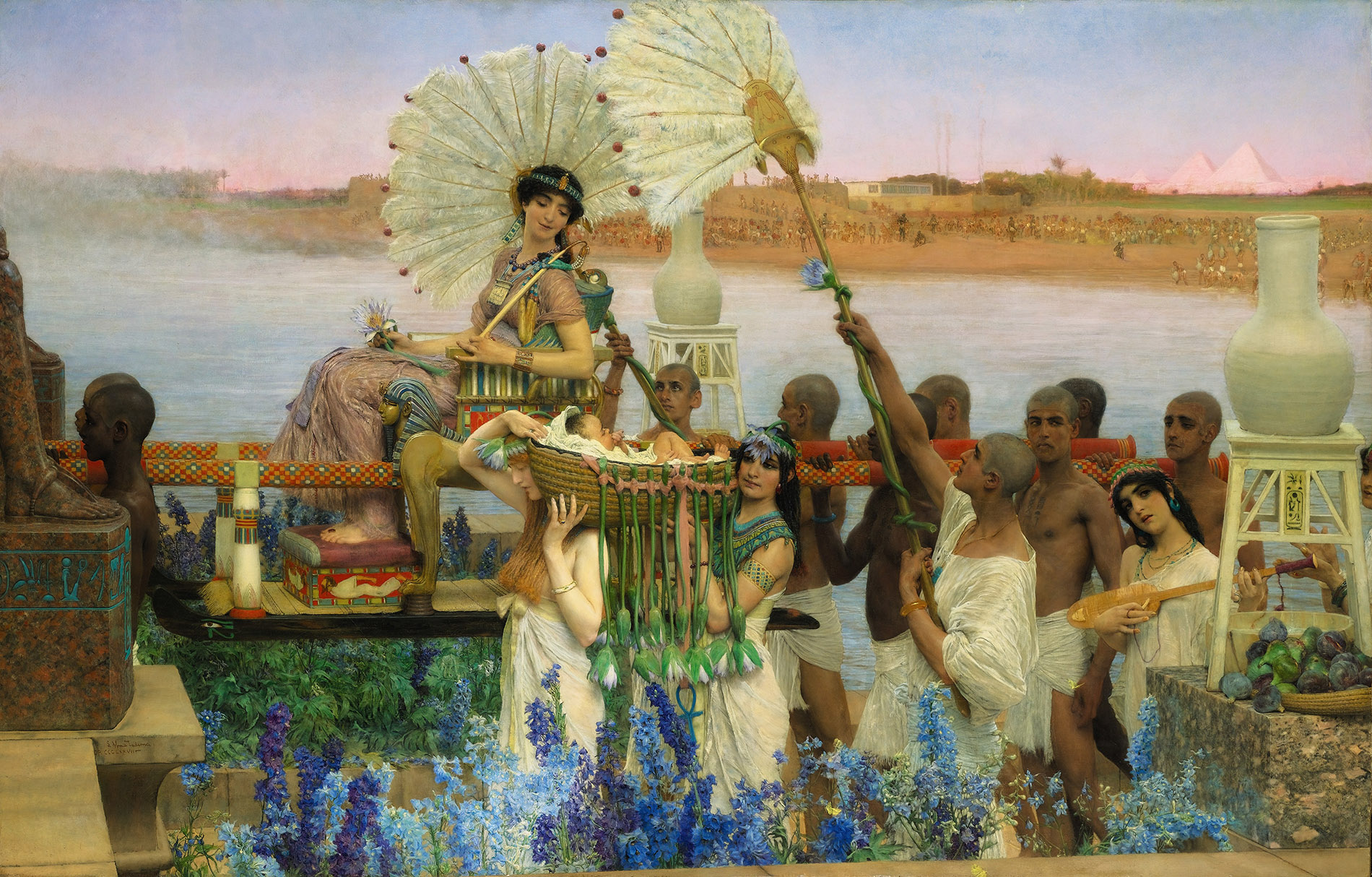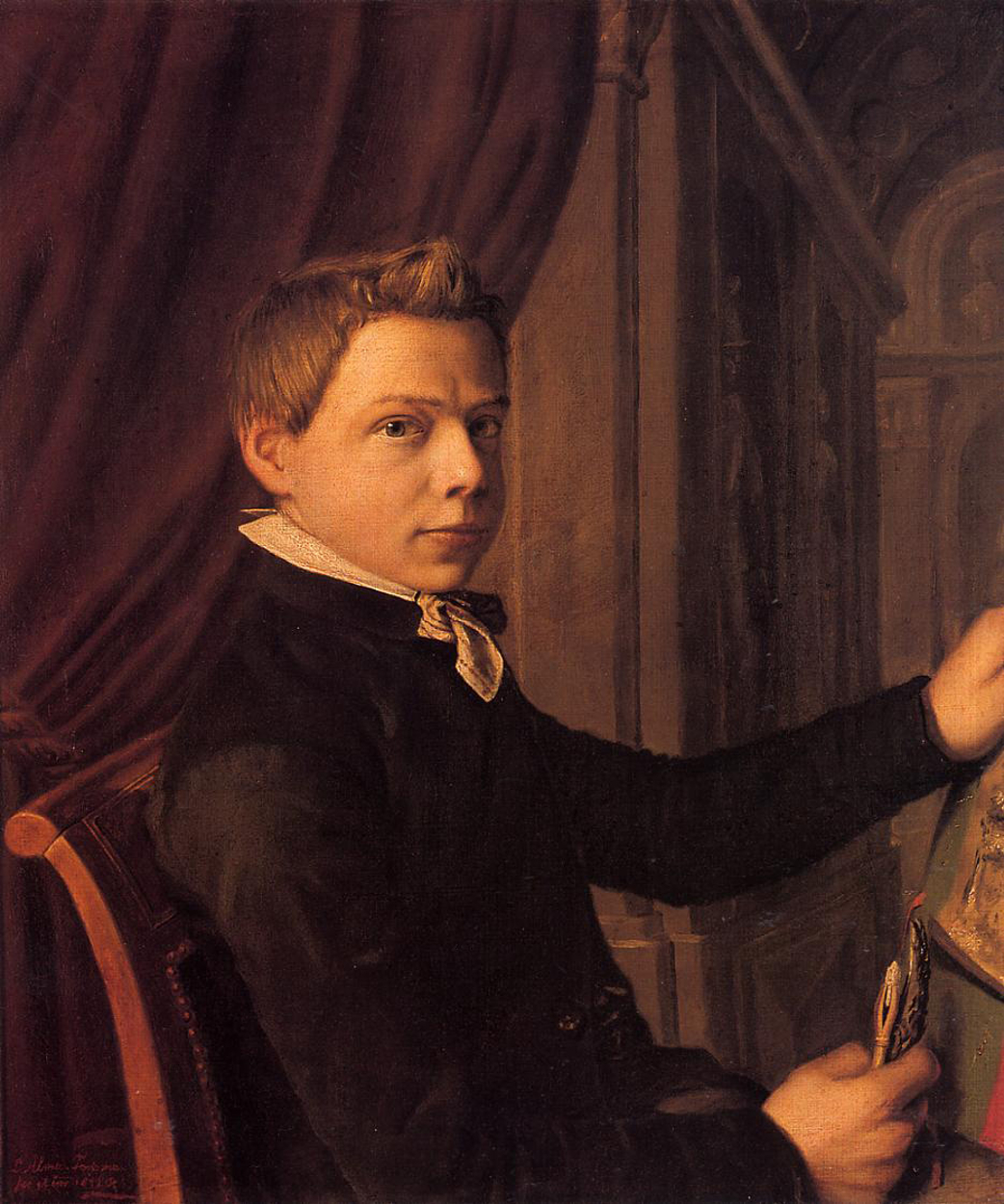On this day in 1836 a Dutch painter of special British denizenship. Lawrence Alma-Tadema, was born. This classical-subject painter became famous for his depictions of the luxury and decadence of the Roman Empire, with languorous figures set in fabulous marbled interiors or against a backdrop of dazzling blue Mediterranean Sea and sky. Though admired during his lifetime for his draftsmanship and depictions of Classical antiquity, his work fell into disrepute after his death, and only since the 1960s has it been re-evaluated for its importance within nineteenth-century English art.
In November 1902, at the age of sixty-six, Lawrence Alma-Tadema left London for an expedition to Egypt. The occasion was the opening of the Aswan Dam on December 10, 1902. He painted The Finding of Moses for the engineer who built the Dam, collected his works, and was also his host in Egypt—Sir John Aird.
The Finding of Moses' subject comes from Exodus 2. The Pharaoh's daughter, accompanied by her maidens, comes to the riverbanks to "wash herself," spies an "ark," "and when she opened it, she saw the child; and, behold the babe wept. And she had compassion on him, and said ’This is one of the Hebrews' children.’" (2:5-6). In the following verses, the Pharaoh's daughter gives the child away to her maid until he is returned grown when "he became her son. And she called his name Moses" (2:10).
Alma-Tadema takes this well-known Biblical story and expands upon the narrative in his large composition. Secreted away with the maid, the infant Moses would not have been carried so proudly along the Nile by a retinue of maidens, slaves, and priests. Indeed the overall mood is one of celebration, equal parts ritual religious procession and showy parade. Held aloft on her royal chair, dressed in regal finery, the Pharaoh's daughter holds a prominent place in the composition, her soft smile suggesting bemusement that the basket holds a baby. She is at the center of the picture space—perhaps because, it was Aird's own daughter who sat for the figure of Pharaoh's daughter. The inclusion of so many accompanying figures allowed the artist to feature many of his favorite (if not always ethnographically accurate) models from past masterworks: the maidens, from the olive skinned exotic beauties with glossy, dark braids to more familiar fair skinned strawberry blondes; the male attendants with their darker complexions similar to the Roman slaves in the artist's early works of An Exedra and The Sculpture Gallery (both 1869); and the priests, their shaved heads and white linen drapery a symbol of their purification.
This painting was sold at auction in 2010 for USD 35,922,500.


 Lawrence Alma-Tadema
Lawrence Alma-Tadema